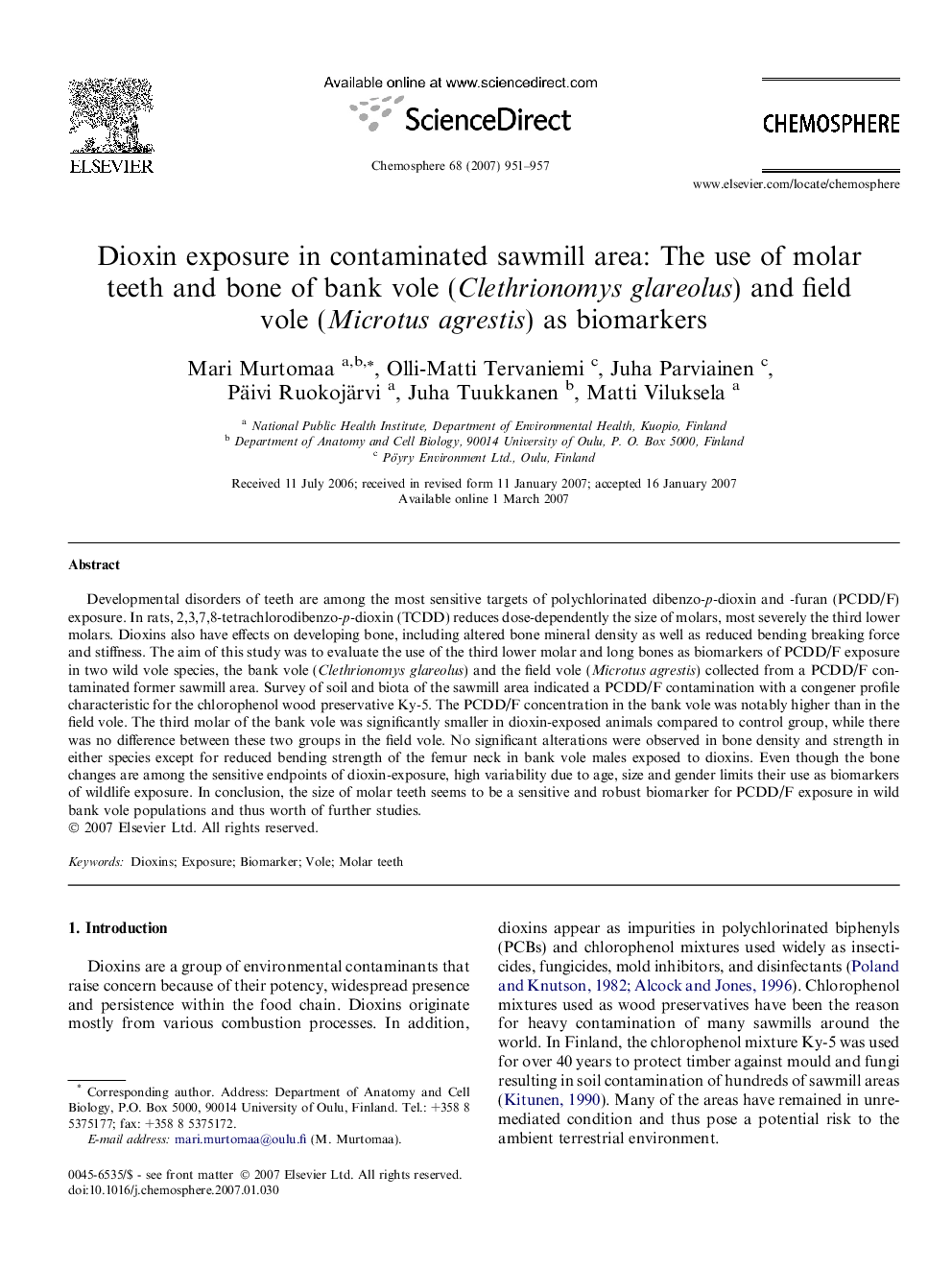| کد مقاله | کد نشریه | سال انتشار | مقاله انگلیسی | نسخه تمام متن |
|---|---|---|---|---|
| 4415452 | 1307747 | 2007 | 7 صفحه PDF | دانلود رایگان |

Developmental disorders of teeth are among the most sensitive targets of polychlorinated dibenzo-p-dioxin and -furan (PCDD/F) exposure. In rats, 2,3,7,8-tetrachlorodibenzo-p-dioxin (TCDD) reduces dose-dependently the size of molars, most severely the third lower molars. Dioxins also have effects on developing bone, including altered bone mineral density as well as reduced bending breaking force and stiffness. The aim of this study was to evaluate the use of the third lower molar and long bones as biomarkers of PCDD/F exposure in two wild vole species, the bank vole (Clethrionomys glareolus) and the field vole (Microtus agrestis) collected from a PCDD/F contaminated former sawmill area. Survey of soil and biota of the sawmill area indicated a PCDD/F contamination with a congener profile characteristic for the chlorophenol wood preservative Ky-5. The PCDD/F concentration in the bank vole was notably higher than in the field vole. The third molar of the bank vole was significantly smaller in dioxin-exposed animals compared to control group, while there was no difference between these two groups in the field vole. No significant alterations were observed in bone density and strength in either species except for reduced bending strength of the femur neck in bank vole males exposed to dioxins. Even though the bone changes are among the sensitive endpoints of dioxin-exposure, high variability due to age, size and gender limits their use as biomarkers of wildlife exposure. In conclusion, the size of molar teeth seems to be a sensitive and robust biomarker for PCDD/F exposure in wild bank vole populations and thus worth of further studies.
Journal: Chemosphere - Volume 68, Issue 5, June 2007, Pages 951–957